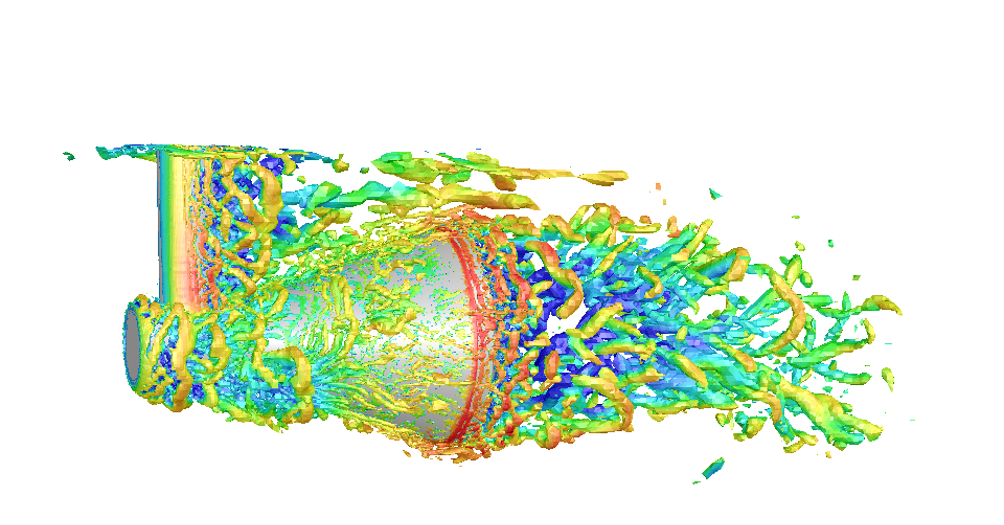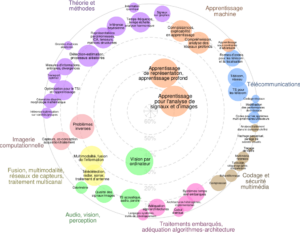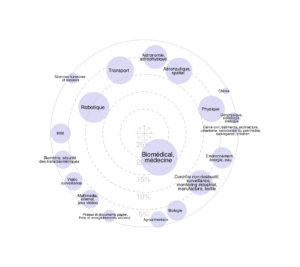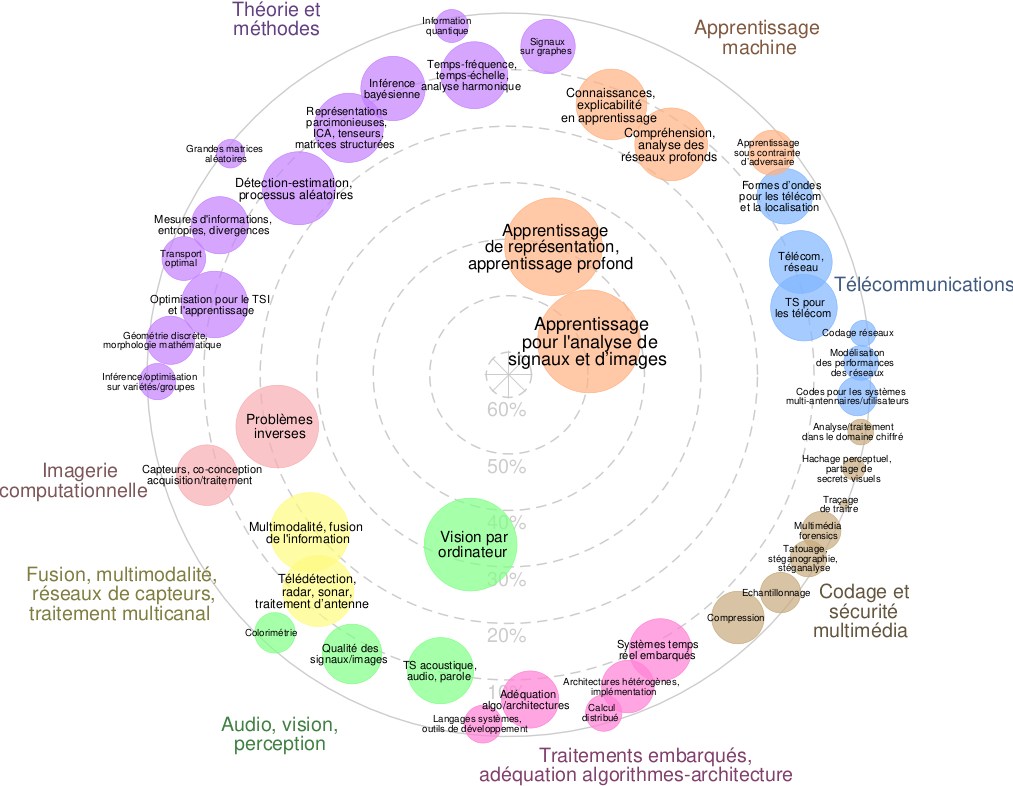
Flow of fluid around an object
Contact :
- Raphaëlle Chaine, LIRIS, (raphaelle.chaine@liris.cnrs.fr)
- Julie Digne, LIRIS, (julie.digne@cnrs.fr)
- Yuliia Sednieva, ANSYS, (yuliia.sednieva@ansys.com)
- Jean-Daniel Beley, ANSYS (jean-daniel.beley@ansys.com
Context :
Ansys is a global leader in numerical simulation and 3D design software with a proven track record in multiphysics numerical analysis. In association with LIRIS, Ansys offers a CIFRE PhD thesis in the analysis of numerical data carried by meshes.
This initiative covers simulations involving structural mechanics, computational fluid dynamics, electromagnetism, heat transfer, optics, etc., where the complexity and accuracy of the models require high-performance computing resources and generate very large volumes of data. These simulations are carried out using the various Ansys solvers. By leveraging LIRIS’ expertise to exploit the geometry of data stored in meshes, Ansys seeks to streamline the storage and utilization of high-precision simulation results, facilitating their remote graphical rendering as they are generated, but also ensuring their long-term archiving.
Some simulation results are particularly difficult to compress due to their complexity and the nature of the data involved:
- Structural mechanics simulations analyze stresses and strains resulting from non-regular behaviors such as contact and plasticity. The phenomena involved are geometrically multi-scale: geometric details and changes in material properties require high-resolution discretization carrying solutions with very high local gradients. We therefore use multi-scale simulations in the space domain. When the simulated phenomena evolve over time, there is a multi-scale aspect in time, with global motion that can be of the order of several seconds, while locally, observation frequencies of more than 10000 Hz are necessary.
- Simulations in fluid dynamics involve solving highly nonlinear equations, which can result in extremely large and complex transient datasets on models that can have billions of cells.
- Simulations in electronics involve complex interactions of electromagnetic fields, often requiring highly refined meshes to capture phenomena with geometric details down to a few nanometers on structures that can be a few tens of centimeters in size with extremely high observation frequencies.
As an example, we plan to consider datasets with hundreds of millions of values and evolving over time with hundreds of time steps. To this end, Ansys wants to develop compact, lossless or low-loss representations that accuracy is redefined and easily used. To do this, Ansys wishes to get closer to LIRIS laboratory and the results they obtained for identifying and exploiting similarity in geometric data. One of the challenges will be the possibility of compression on the fly, or at least with a controlled memory footprint.
Thesis subject :
The aim of this PhD thesis is to develop new approaches to analyze, represent and store high-precision simulation data obtained on fine meshes (mainly volume meshes, but also surface meshes). To do this, the proposed approach aims at decomposing the result of the simulation on representative bases resulting from a so-called non-local joint analysis. However, the data generated on meshes do not benefit from regular prior structure and the thesis will focus on the obstacles posed by this restriction. This thesis will include numerical aspects to analyze the data independently of its supporting mesh but also algorithmic aspects to take into account the specificity and size of the meshes. It will also be possible to benefit from the optimization power of lightweight neural networks for dimensional reduction of the various problems.
Skills required :
Skills in applied mathematics and computer science (Algorithmic, C++ programming and Python) are required for this thesis, as well as knowledge of numerical optimization tools such as PyTorch and/or PyAnsys tools.
Working conditions :
- The doctoral student will divide his or her time between LIRIS (Nautibus building, La Doua campus, Lyon 1 University) and ANSYS (Le Patio building, rue Louis Guérin, Villeurbanne). Both locations are less than a 15 minutes walk apart. Villeurbanne is a city right next to Lyon, a dynamic multicultural city of France.
- Expected beginning of the thesis: September or October 2025
- Salary: 31,000 EUR gross annual
Bibliography :
- Mallat, S. G.; Zhang, Z. (1993). “Matching Pursuits with Time-Frequency Dictionaries”. IEEE Transactions on Signal Processing. 1993 (12): 3397–3415.
- Aharon, M.; Elad, M.; Bruckstein, A.M. (2006). “The K-SVD: An Algorithm for Designing of Overcomplete Dictionaries for Sparse Representation”. IEEE Transactions on Signal Processing. 54 (11): 4311–4322.
- Bergeaud, F.; Mallat, S. (1995). “Matching pursuit of images”. Proceedings., International Conference on Image Processing. Vol. 1. pp. 53–56.
- J. Digne, R. Chaine, S. Valette, “Self-similarity for accurate compression of point sampled surfaces” Proceedings Eurographics 2014, in Computer Graphics Forum, Wiley, Vol. 33, Number 2, p.155-164,
- J. Digne, S. Valette, R. Chaine, “Sparse Geometric Representation Through Local Shape Probing”. IEEE Transactions on Visualization and Computer Graphics 2017
- A. Hamdi-Cherif, J. Digne, R. Chaine, “Super-resolution of Point Set Surfaces using Local Similarities”, Computer Graphics Forum 2017





